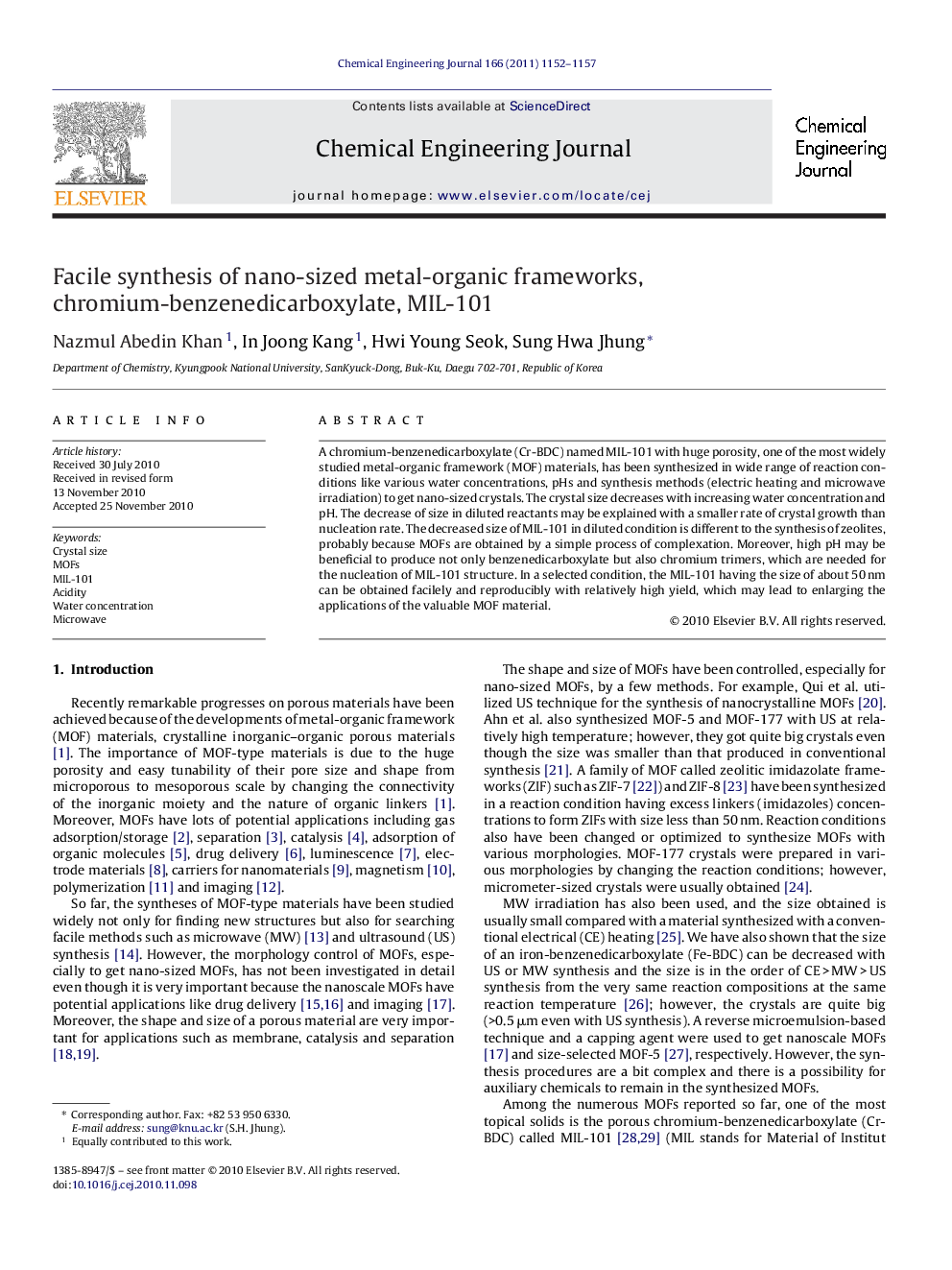| Article ID | Journal | Published Year | Pages | File Type |
|---|---|---|---|---|
| 151499 | Chemical Engineering Journal | 2011 | 6 Pages |
A chromium-benzenedicarboxylate (Cr-BDC) named MIL-101 with huge porosity, one of the most widely studied metal-organic framework (MOF) materials, has been synthesized in wide range of reaction conditions like various water concentrations, pHs and synthesis methods (electric heating and microwave irradiation) to get nano-sized crystals. The crystal size decreases with increasing water concentration and pH. The decrease of size in diluted reactants may be explained with a smaller rate of crystal growth than nucleation rate. The decreased size of MIL-101 in diluted condition is different to the synthesis of zeolites, probably because MOFs are obtained by a simple process of complexation. Moreover, high pH may be beneficial to produce not only benzenedicarboxylate but also chromium trimers, which are needed for the nucleation of MIL-101 structure. In a selected condition, the MIL-101 having the size of about 50 nm can be obtained facilely and reproducibly with relatively high yield, which may lead to enlarging the applications of the valuable MOF material.
